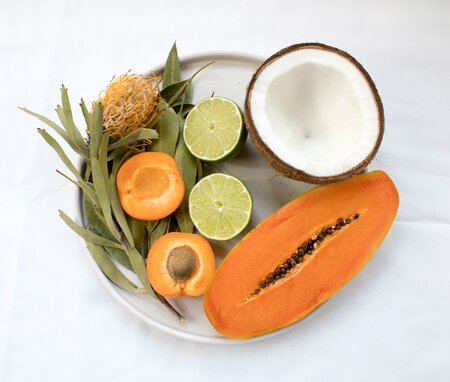It's no secret that the clean lifestyle movement is on the rise. From the food we eat to the beauty products we put on our faces, the demand for 'all-natural' and 'organic' ingredient is high. But what exactly do these vague labels mean? Are they really better than the regular ones we use? More importantly, does this imply that other brands are considered toxic and dirty? Let's investigate.
What are 'clean' ingredients?
Looking at the most popular clean beauty brands right now, one thing is clear: there is an emphasis on naturally sourced ingredients. This means plant-based ones like those that contain herbs, cold-pressed oils and natural exfoliators. The reason why clean beauty puts a premium on 'natural' ingredients is based on the belief that these won't cause disruptions in the way our hormones work as compared to synthetic ones like parabens.

These preservatives are a big source of controversy and have been blamed to cause a wide array of diseases, including breast cancer. In a study, traces of parabens are found on breast cancer sample tissues, which have led some to conclude that it could be the culprit. But, certain experts are sceptical because the same study didn't examine if healthy tissues also had parabens. As of now, parabens are considered safe to use in limited quantity by many governing bodies. However, ever since concerns are raised, the rule among the beauty community is to just avoid parabens altogether rather than taking a chance.

This is where clean ingredients come in. Most are alternatives to conventional preservatives and cleansers. In shampoos, harsh sulfates are substituted with mints, sunflower and coconut oils that also have a mild cleansing effect. In theory, as long as it's not controversial or synthetic it can pass as 'clean'.
But are they better?
When clean beauty products come to mind, we think of not just natural ingredients but also those that are eco-friendly and ethically made. However, that's not always the case. Remember Bakuchiol? Dubbed the 'natural' and more effective yet less harsh alternative to retinol, Bakuchiol became a trendy ingredient in an instant, but it also faded out of popularity just as fast. Why? Because although it was marketed as 'clean', its source — the plant Psoralea corylifolia — is actually endangered, making it an unsustainable ingredient.
While most ingredients in clean beauty products are of good quality and ethically sourced, it's important to note that just because it's marked 'clean' doesn't mean it's automatically good — for you or the environment. Another concern about clean beauty ingredients is that it's hard to predict its short-term (like allergic reactions) and long-term effects since this practice just became a recent trend.
So what now?
After reading all of the above, you may think that clean beauty products are actually no good. However, that's not the case at all. The original intention behind making these alternatives roots from becoming more conscious about what we consume, and that's a good thing. Moreso, some clean beauty products are reported to work better than traditional drugstore finds. Making all these ethical makeup and skincare is the first step but it may be time to level it up to the next: regulation of the label 'clean'. Unlike the words 'new' and 'pure', 'clean' doesn't have set standards.

Basically, you can slap the label 'clean' on any bottle (regardless of whether it's true or not) and call it a day. Yes, sometimes it could be misleading because there's no expectation set on what is 'clean'. Until a standard is set in place, the best thing do to is exercise caution and be a discerning consumer. Shop smartly!
Comments, questions or feedback? Email us at [email protected].


_SPF_50_Cover.jpg)





